Coal Export Terminal Plan Nixed by Oregon Agency
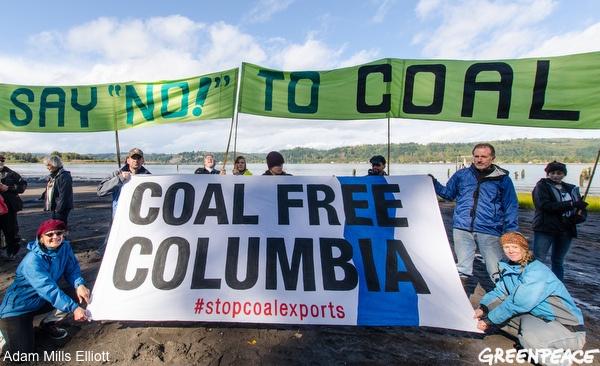

And then were two. Oregon’s Department of State Lands on Monday denied an Ambre Energy proposal to transport coal by rail to a Port of Morrow, Oregon terminal for eventual export to China and other Asian markets.
This is the latest in a series of wins for opponents of coal company plans to move coal through the Pacific Northwest on the way to Asian markets. But two major plans in Washington state, out of six original proposals, are still pending. The two proposals that remain on the table are the Gateway Pacific Terminal at Cherry Point north of Bellingham, and the Millennium Bulk Terminal at Longview on the Columbia River.
“We’ve gone from six down to two, with the two biggest and baddest remaining,” said Eric de Place, research director at The Sightline Institute and a critic of environmental and economic impacts of the proposed terminals. He was quoted in a Seattle Post-Intelligencer online article. The Gateway Pacific project would have the capacity to export up to 48 million tons of coal annually, translating to 17 trains a day through Puget Sound population centers. The Longview port would have a capacity of 44 million tons each day.
Australia’s Ambre Energy plan — on a much smaller scale than the Gateway and Millennium projects, would move coal by rail to the Coyote Island Terminal at the Port of Morrow near Boardman. From there it would be barged downstream on the Columbia River to Clatskanie, and from there shipped to China.
“As many people know, this permit application has taken hundreds of staff hours to review,” Mary Abrams, Department of State Lands director, said in a press release. “From reading more than 20,000 public comments to carefully analyzing technical documents and plans, this application has been scrutinized for months. We believe our decision is the right one, considering our regulatory parameters laid out in Oregon law, and the wealth of information we have received from the applicant and the public.”
The department regulates filling and removing of material from “waters of the state” which include wetlands, rivers and streams. The Coyote Island Terminal removal-fill permit application proposed 572 cubic yards of permanent fill (in the form of pilings) in the Columbia River on submerged land owned by the Port of Morrow.
The department determined that the Ambre’s permit application “is not consistent with the protection, conservation and best use of the state’s water resources, and that the applicant did not provide sufficient analysis of alternatives that would avoid construction of a new dock and impacts on tribal fisheries.”
“We used data provided by a wide array of parties, and weighed this information against what Oregon law says we must take into consideration in making removal-fill permit decisions,” Abrams said. “We fully believe that our conclusion to deny the Coyote Island Terminal permit is the right one.”
The department noted that Ambre can appeal the decision, which would involve a hearing before an administrative law judge through the contested case process. There was no immediate word from Ambre on whether it will appeal. (Triple Pundit reported on the financial problems facing Ambre’s coal plans last year.)
But the nonprofit Alliance for Northwest Jobs and Exports said the the department's decision "hurts all trade-related industries and workers in our region," according to a written statement from Alliance spokeswoman Kathryn Stenger. The state's ports are "one of the few bright spots in Oregon's economy," she said.
Although Ambre Energy needs the rejected permit to build a dock, the Alliance suggested in its statement that Coyote Island and the other two coal terminal proposals would still be built.
So, the battleground shifts to the remaining two proposals even as China’s demand for U.S. coal recedes. Things are looking up for derailing PNW coal exports.
Image credit: Banner Protest by Greenpeace USA via Flickr
Social Media Bubbles: Are They Holding Us Back?


None of us likes to admit that our emotional and intuitive reactions can be manipulated by what we see online. Nor do we like to discover offhandedly that our independent thoughts are often molded by what our friends and neighbors think. Cornell University researchers recently demonstrated this to us in their infamous Facebook study, in which users were duped into revealing their impressionable thoughts without knowing it. In the process, they also revealed that what we see online can be tailored to match what we say we like and don’t like.
Study subjects weren’t the only ones who sat up and took notice of this information and the study results. The U.S. State Department did too.
It seems that the agency has already extrapolated that what we ‘like’ on social media sites can influence what we see online in general. So if you happen to follow progressive organizations on FB and are often ‘liking’ their posts, the ads and the other promotional material you see is probably going to be of the same ilk. Conversely, if your leanings are a bit more toward the Tea Party, let’s say, what you are going to find coming across your screen will most often mirror that ‘bubble’ of perspectives.
The State Department says the problem with this type of reinforced grouping (what the Facebook study referred to as “emotional contagion”), is it can foment and reinforce social unrest.
The example that Bureau of International Information Programs Coordinator Macon Phillips used in a recent interview with Motherboard is the juxtaposition between viewpoints in the Middle East.
“You start to understand why people in Iraq may see things very differently than people in Tel Aviv,” Phillips said. He blames it on the robots in the background responding to the ‘likes’ and ‘favs’ we use on our social media.
But while international politics in faraway countries may serve as a good example, I find I don’t have to go to that extreme see his point. I’ve lost count of the number of times I see “Impeach Obama?” across my screen each day when I am living in Idaho, and ironically, how often I am being asked for a thumbs-up for Obama when I am in the next province over in Obama-positive Canada.
But I suspect that isn’t really what’s at the heart of the State Department’s thinking. Facebook and Twitter aren’t, after all, the only places we see these influential bots doing their handiwork. The news adverts that splash across the bottom of the screen are often tailored to where we live as well as what we’ve clicked on. They may not all be reflective of what we believe, but the pesky automatons seem to know well enough where we’re residing and what the latest assumptions are about the perspectives of that area. Guns, doing away with healthcare, and whether to ‘send illegal immigrant children’ back to Mexico seem to be top issues for Idaho computer users -- apparently. And no, the bots don’t seem to care whether they are offending anyone, least of all the reader. Even more telling is that the adverts rarely seem to reflect issues related to organic or sustainable living. I guess that's not in the perameters of the "likes" that are expected for my geographic rural area.
Tech experts call this kind of thing ‘siloing.’ The definition is disturbing enough. Per businessdictionary.com, an information silo is “an information management system that is unable to communicate with other information management systems.” While we’re depending on this system for informative material, it’s tailoring its answers to what it thinks we want to know (or it wants us to know, as was proven possible in the Facebook experiment above).
“In a way, social networking has taken fringe groups and given them power they never had before,” Motherboard writer Jason Koebler says. It makes it easier for people to reinforce and justify their beliefs by what they see on their screen – as well as what their friends see. And it removes the need to ask whether the news at the bottom of the screen, the promotional adverts or the hearsay in the chat room is really telling the whole story.
The State Department may be right: Hate groups or political factions like ISIS that draw strength by word-of-mouth can grow with the help of the Internet. But so can more local concerns, like intolerance and the misconception that we needn’t look beyond the borders of our city, the color of our skin or the hearsay on the street. The belief that climate change isn’t real, that sustainable farming can’t succeed globally or that the middle ground can’t be reached between two sides seems more at the heart of what we stand to lose from automated siloing of our news. And that, no matter how smart a bot may be, we can only be inspired by practical inquisitiveness and down-home, good ol’ human nature.
Image credit: Webtreats
Bain Capital Buys 50 Percent Stake in TOMS Shoes
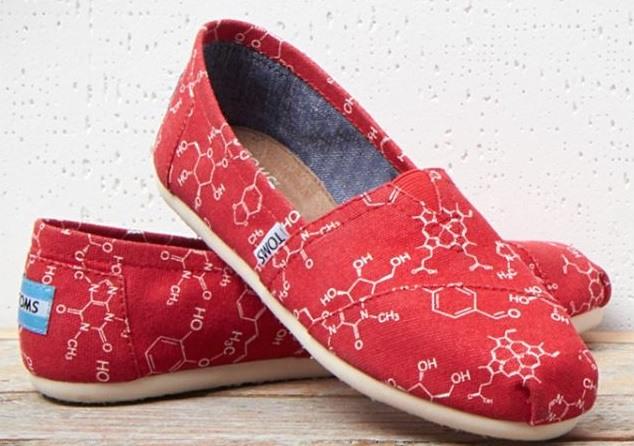

TOMS Shoes, the company often credited for making the one-for-one socially conscious business model take off, decided earlier this summer it wanted to expand even faster since its founding in 2006. Such ambitious goals, of course, require money, so the company’s founder, Blake Mycoskie, started shopping the company around. This week he found a partner in Bain Capital, which has agreed to purchase a 50 percent ownership stake of TOMS. Mykoskie will continue to own the other half of the company; financial terms of the transaction were not disclosed.
The news elicits mixed emotions across the board: The socially responsible business crowd will shudder, no doubt in part because of how Bain Capital was eviscerated by the Democrats during Mitt Romney’s 2012 presidential campaign. Much of that criticism was exaggerated and unfair, but employees of some companies that became part of Bain’s portfolio, such as Ampad, have had plenty to say about the company’s approach to investment. Then again, Bain Capital found success with other firms such as Staples and Gartner. So could this help TOMS in the long run, expand the one-for-one business model, and benefit more people across the globe?
Why not? This story is analogous to the 2001 purchase of Ben & Jerry’s by Unilever. Critics of the deal howled at the thought of the Anglo-Dutch consumer packaged goods giant taking over the quirky and irreverent ice cream outfit with a social conscious, but for the most part, the deal has benefited both parent company and its now 13-year-old division. The same goes for Bain and TOMS: The Boston-based investment firm has no reason to alter the company’s mission, unless it wants to completely destroy the brand. The MBA types will bristle at the thought of the company giving so many shoes and other products away, which would eat away at profits. But that is exactly why TOMS has taken off and its shoes are now easily found just about everywhere.
TOMS has taken its share of lumps and criticisms, but overall has had a net positive effect. Responding to critics that the company really was not addressing poverty (as if conventional international aid organizations were successful), TOMS launched initiatives with the aim to spur more job creation in the countries desperate for it most. The company claims it has given away over 25 million pairs of shoes, has moved into eyewear, opened up an online marketplace that gives opportunities to other socially conscious brands and if imitation is the sincerest form of flattery — has inspired other social entrepreneurs to open similar businesses.
The fact is, companies such as TOMS, and their cousins that have made up the “B Corporation” movement, are here to stay. The way to conduct business is no longer the aims pinstripes versus do-gooders. A company can be a blend of both, have a social mission and be profitable — benefiting everyone in the process.
Image credit: TOMS Shoes Google+ Page
Leon Kaye has lived in Abu Dhabi for the past year and is currently spending some time in Uruguay. Follow him on Instagram and Twitter. Other thoughts of his are on his site, greengopost.com.
Nine Finalists Vie for Energy Storage Innovation Awards


Intelligent energy storage is emerging as a commercially-viable alternative to adding electricity generation capacity or constructing new power plants.
Equipped with energy management software that's responsive to electricity demand and supply conditions, smart energy storage systems are also cropping up among commercial and industrial companies, municipalities and college campuses, helping boost energy efficiency, renewable energy-grid interconnections and reduce utility bills, as well as strains on the power grid.
Heightened interest and investment in intelligent energy storage is prompting industry participants to band together in more organized fashion. Bringing together energy storage policy, technology and market leaders, Energy Storage North America (ESNA) on August 18 announced finalists for its annual 2014 Innovation Award.
“This year’s ESNA Award finalists represent a rich diversity of players and business models in rapidly developing energy storage ecosystems across the U.S. and Canada,” Janice Lin, managing partner of Strategen Consulting and co-founder of the California Energy Storage Alliance, was quoted in a news release. “Energy storage as an asset class is a welcome addition to electric system planning toolkits in California, Hawaii, New York, Ontario and other markets.
Recognizing excellence in energy storage innovation
Nine project developers were chosen as representatives of excellence in installed energy storage projects spanning utility-scale, customer-sited commercial, industrial or residential, and mobility – electric vehicle (EV) and supporting infrastructure. “The strength of this year’s nominees demonstrates that we are past the early technology tipping point and moving toward the mainstream,” Lin commented.
Market-driven criteria and the ability to advance progress in the development and commercialization of energy storage systems served as the basis for selecting ESNA Innovation Award finalists.
“The 2014 Award criteria align with the most critical aspects of market development for energy storage, such as safety, reliability, and security, which are also reflected in the event’s programming this year,” said Jeff Gates, ESNA Advisory Board member and managing director of Duke Energy.
Following is the list of ESNA 2014 Innovation Award finalists. More complete descriptions are available at the ESNA awards website.
- Utility-scale: 2500 R Midtown (Sacramento, California); Abengoa Solana CSP Plant (Gila Bend, Arizona); and SCE Tehachapi Wind Energy Storage Project (Tehachapi, California).
- Customer-sited: EaglePicher PowerPyramid BESS (Promontory, Utah); Green Charge Networks GreenStation 2.0 (various locations, California); and UC San Diego/BMW 2nd Life EV Energy Storage System (San Diego, California).
- Mobility: Benecia City Hall Solar EV Fast Charger with Storage (Benecia, California); Powertree San Francisco One (San Francisco, California); and SEPTA Energy Optimization Project (Philadelphia, Pennsylvania).
ESNA this year is also introducing an ESNA Champion Award to honor “an individual who has shown leadership and dedication in the advancement of energy storage in North America.
ESNA is turning to social media to help choose this year's ESNA Innovation Award winners. Public votes via Twitter (which must include the #ESNAAwards2014 hashtag) or the ESNA awards website will account for 50 percent of the final results, with the ESNA Advisory Board making up the other half.
The winners of this year's ESNA awards will be announced at the Energy Storage North America conference and exhibition, which is to take place at the San Jose Convention Center Sept. 30-Oct. 2.
*Image credits: 1) EaglePicher PowerPyramid BESS; 2) 2500 R Midtown, Sacramento, CA
Can Detroit Restart Its Engine?


By James Coburn
Detroit is a dichotomy.
The city’s innovative spirit that brought us the assembly line and the modern auto industry lives on in wildly successful new enterprises like Quicken Loans. Yet Detroit’s much-publicized poverty has spawned a depressed yet resilient culture that continues to struggle to pull itself out of the gutter.
Big ideas, modest progress
The macro thinkers of Detroit’s Economic Growth Corp. are focused on job creation. Their mantra is “one job creates many,” expressing their belief that jobs are an important way to get the city back on its feet. Yet the sheer scale of the municipality – 170 square miles – makes the pace of progress seem slow.
Place-making and art are happening all over the city: On the many abandoned properties, as well as downtown, through the efforts of Ford, Quicken Loans, and business moguls like Dan Gilbert and Mike Ilitch. These efforts are attracting young talent into a city center with many buildings that only five years ago were mere skeletons of themselves. Driven leaders like Mayor Mike Duggan are tirelessly pushing ahead to create innovation areas in the city to encourage new industry and create sustainable jobs. The city is also acting as fast as resources will allow to remove the remainder of the nearly 78,000 abandoned homes and putting in up to 800 street lights a week to create a safer city.
Neighborhoods taking charge
While these efforts are making strides in Detroit’s recovery, some of the city’s most blighted neighborhoods aren’t waiting on the system – or the moguls – to help them. The residents of Brightmoor, an area of abandoned homes, drugs and homicide, are taking back their neighborhood through planned community efforts.
Members of Neighbors Building Brightmoor have planted numerous community gardens – often near houses known for illicit behavior as a way to keep an eye on them. They also spearhead art, youth and housing revitalization programs, and have recently partnered with the Wayne County Sheriff to pair residents and deputies in regular neighborhood patrols that focus on quality of life as much as criminal activity.
Such locally-grown efforts seem to be a trend in many of Detroit’s poorest and most violent neighborhoods, building hope for the “Paris of the Midwest.”
James Coburn has spent the last 8 years working in Marketing and Advertising while living in his home state of Utah. James is working to earn his MBA in Sustainable Systems and when he’s not concentrating on school you can find him developing youngsters coaching youth lacrosse, as well as having adventures in the mountains around his home.
Volkswagen Wins EPA Rain-Catcher Award for Chattanooga Plant
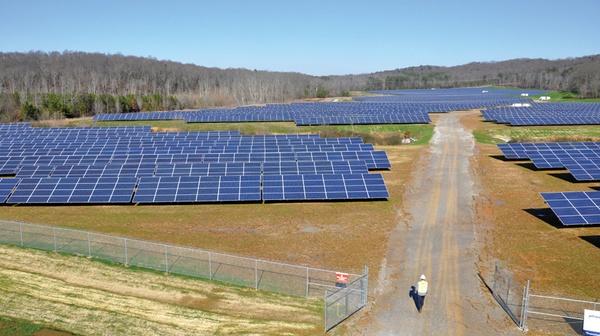

Wetland restoration is an excellent means of water resource management and stewardship, due to its cost-effectiveness and sustainability. An April report from the Center for American Progress and Oxfam America revealed the remarkable economic value and benefits resulting from coastal ecosystem restoration projects around the U.S.
“We learned in a nutshell that there’s a win-win, if not a win-win-win, opportunity that presents itself when you invest in conservation. The economic benefits are remarkable … There’s a direct connection between what we’re doing to enhance the environment and what we’re doing to enhance economic opportunity,” summarized Mark Schaefer, National Oceanographic and Atmospheric Administration assistant secretary of commerce for conservation and management.
The U.S. Environmental Protection Agency (EPA) and partner organizations have been promoting use of “green infrastructure” for years “as part of a comprehensive approach to achieving healthier waters.” Recognizing excellence in such initiatives for the first time, EPA on August 19 awarded Volkswagen Group of America (VW) with the EPA Region 4 Rain-Catcher Award, Commercial Category during an awards ceremony at the EPA Region 4 International Erosion Control Association Municipal Wet Weather Stormwater Conference in Charlotte, North Carolina.
The multiple benefits of "green infrastructure"
Green infrastructure, as the EPA explains, “uses natural systems and/or engineered systems designed to mimic natural processes to more effectively manage urban stormwater and reduce receiving water impacts.”
The first automobile manufacturing facility to earn the U.S. Green Building Council's LEED Platinum certification, Volkswagen's Chattanooga, Tennessee plant voluntarily set aside at least 20 percent of the facility as open space. It has also implemented a host of conservation practices, including measures to better cope with stormwater and runoff.
These include using bioswales in parking lots, and the construction of 3.3 miles of stream and 2.8 miles of green space. In addition, VW is collecting stormwater from the facility's roof for use in a cooling tower and toilets.
Along with offering employees and locals nature recreation activities, these ecologically-based stormwater management measures are also helping protect wildlife. Two wetland areas help assure the survival of several species, including the red-headed woodpecker and the rusty blackbird, the EPA highlights.
Making use of clean, renewable energy is another facet of VW's efforts to assure the overall sustainability of its Chattanooga manufacturing plant. In January 2013, VW flipped the switch on Tennessee's largest solar photovoltaic (PV) installation. Installing 33,600 PV panels over 33 acres, the solar power field produces enough clean, renewable electricity to power the equivalent of some 1,200 homes.
*Image credits: 1), 3) VW of America; 2) Wardsauto.com
Stonyfield Collaborates With WikiFoods to Sell Package-Free Yogurt


Plastic is a part of our lives. It packages many of the food products we buy, encases our electronics and is even found in our cars. Plastic waste causes numerous environmental problems, particularly in the world’s oceans where it makes up about 90 percent of all trash floating around. The biggest plastic waste ocean site is in the North Pacific Gyre. Called the Great Pacific Garbage Patch, it is twice the size of Texas. Since plastic takes a very long time to degrade, some 500 to 1,000 years, it is impossible to completely clean up.
There are two companies that have created a way to reduce plastic waste by eliminating packaging. Stonyfield Farm and WikiFoods have collaborated to provide frozen yogurt encased in edible packaging made from fruit skin. The product is called Stonyfield Frozen Yogurt Pearls, and an edible packaging called WikiPearl packages the less than 30-calorie frozen treat. The companies started a test market in March at four Whole Foods stores in the Boston area with six flavors.
WikiPearl technology protects the food or beverage wrapped inside without exposing it to chemicals or unnatural ingredients. It is made up of two parts: the food or beverage (frozen yogurt in this case) and the skin, an edible, biodegradable food made with organic fruit. WikiFoods describes the skin as a “protective electrostatic gel formed by harnessing interactions between natural food particles, nutritive ions and a polysaccharide.” The skin creates a layer that is not as permeable to air which allows them to be washed, carried and handled without damaging the food or beverage inside.
At the present time, consumers outside of the four test market areas will not be able to find Stonyfield Frozen Yogurt Pearls. However, Stonyfield and WikiFoods are working with retailers to create ways to sell them in the “near future,” as WikiFoods states on its website. The trouble is that stores are not yet equipped to sell them totally package-free. WikiFoods has created two Wikibars where they are sold to consumers who then put them into their shopping bags or containers. Wikibars are only in two locations: in Paris, France and Cambridge, Massachusetts.
The collaboration between Stonyfield and WikiFoods received recognition earlier this summer at the 2014 World Dairy Innovation Awards in Istanbul, Turkey. The two companies won three awards for Best Ice Cream or Frozen Yogurt, Best Dairy Packaging Innovation and Best Overall Concept.
The collaboration allows Stonyfield to fulfill a long-held dream to provide its products without packaging, as co-founder and chairman, Gary Hirshberg explained. “We’ve long dreamed of the day that after you eat the yogurt, you eat the cup too. Stonyfield Frozen Yogurt Pearls are the next step in our evolution,” Hirshberg said. “No spoon needed, just a delicious bite of beautifully crafted organic frozen yogurt served without any container. Re-imagine all the ways you can eat your favorite organic dessert – in the car, on the beach, with the kids at the park – no spoon, no waste, no limits.”
WikiFoods envisions a time when many different food and beverage products are packaged with WikiPearl. WikiFoods already has a number of Wikipearl products, including frozen yogurt, ice cream, cheese, fruits, vegetables, water, cocktails and soups. The founder of WikiFoods, David Edwards described the company in a video as “a vision of a totally new way in which we package food and beverage so we eliminate the wasteful packaging that is so present in food and beverage today.”
Image credit: WikiFoods
Why Insecure Data Is Bad for the U.S. Economy

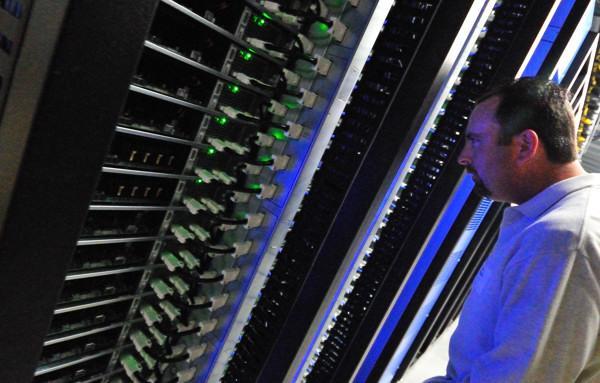
Deep in the interior of British Columbia, Canada, in ranching country known for its short bursts of intense summer weather and dry, temperate winters, the makings of a quiet rebellion are taking root. It’s not the kind of thing that tech companies are prone to talk about here, except when it comes to lauding the growing success of Canada’s data services industry. Building a Canada-strong network in a market once ruled by U.S. expertise can be a political hot potato.
But check the register of IT companies for British Columbia’s popular recreational tourism corridor and the trend becomes clear. Kamloops, once dubbed the “Tournament Capital of Canada,” has a new marketplace taking shape, one that has less to do with hockey and yearly rodeos, and more to do with safeguarding proprietary rights.
Canada’s data security conundrum
Kamloops’ data services industry was already in the making when whistleblower Edward Snowden made his landmark announcement last year that the National Security Agency was accessing customer data. The revelations haven’t hurt Canadian companies like Telus, Rogers and Canada Bell, who have been working steadily to woo data customers.
But it has hurt relations between American telecommunications companies and international clients who anticipated that their data would remain a private matter under U.S. law.
Big Data, big sales
Data management represents a huge portion of the global IT market. In 2013, cloud computing represented $130.7 billion, says the research portal Statista. And the stats suggest the industry is poised to grow: Projections suggest that number will grow to $154.69 billion by the end of 2014, and another $26.61 billion in 2015.
But in the U.S., where more than half of companies used cloud-based services in 2013, the projections aren’t as optimistic. By December 2013, experts were already anticipating significant losses for large data companies like Hewlett-Packard, Oracle and IBM. According to research published by the Information Technology and Innovation Foundation, losses to U.S. cloud-computing services will start slow, with an estimated drop in services from U.S. and non-U.S. sources of $3.8 billion. That loss will grow in the next two years, however, and is estimated to be as much as $35 billion by the end of 2016 (see page 6).
Forrester Research places the loss much higher, at as much as $180 billion, as evidenced by Microsoft’s recent loss of business with Brazil, which cancelled contracts after it learned of the NSA spying program. Since that time, Brazil and the European Union have announced a partnership to build new undersea cables between the two continents in lieu of using infrastructure provided by the United States.
The gold standard
U.S. leadership in data services isn’t just defined by investment, says Elliot Goldberg, director of professional services for the telecommunications, cloud-broker and professional services company Osstelco. It’s also defined by reputation.
“It used to be the USA data services were among the gold standard. Now foreign companies don’t trust it that much,” said Goldberg in a recent interview. “Data centers have to be secure. That is the whole point to them. If they are not secure, why move the data off of the company’s premises?”
Goldberg said many companies may encrypt their data when it’s being sent or received, but the real measure of security is its status “at rest.” That is, is it being encrypted while it is being stored?
“Some people want it, some don’t. Some companies are still thinking that it’s okay [if the data is] not encrypted once it is in the data center because if it is encrypted, it takes more time to do the processing. My recommendation to people has always been buy a bigger processor and leave it encrypted,” said Goldberg.
That’s because it isn’t just whether the data may be vulnerable to government security procedures, but also to hackers.
Last year when hackers broke into Target Stores’ data, it put 40 million shoppers at risk for stolen data. The cost for financial institutions that were forced to replace debit and credit cards topped $200 million, but the entire bill for the incident, analysts concluded, was an easy $100 billion. Again, that’s a cost that doesn’t just hit the bottom line of merchants and financial institutions, but also the confidence and fidelity of consumers who may or may not do business with that company again.
“It takes very little time to destroy [trust],” said Goldberg, “but a long time to rebuild it."
Moving overseas doesn't assure data security
And data companies that elect to move their storage facilities abroad may be overly optimistic, said Goldberg, who noted that U.S. companies aren’t the only ones that get hacked. He said for his own peace of mind, he would probably trust a U.S. data center before he would move his data overseas.
“But I would encrypt everything with the best encryption policy I could put in my system.” In the long run, he felt a hybrid system that utilized in-house storage as well as the cloud offered the most security. “Depending on the corporate policy, you have to take a hard look at what you put out there, given the risk involved. Data is the life blood of a company,” said Goldberg.
Still, those who expect that U.S. companies that store their data overseas will be safe from prying eyes may be surprised. In July, a New York magistrate judge ruled that Microsoft was still responsible for turning over customer data stored at its facility in Ireland. Data services companies have spoken out in the fray, noting that such a ruling could mean that U.S. data companies like IBM, which has been building a data center in Europe, would still be subject to data review policies of the U.S. government. Although the judge agreed to stay her order while Microsoft files its appeal, such a finding could further erode global confidence in U.S. data companies.
Meanwhile, Canadian companies in western British Columbia’s temperate ranching country, where operational costs of cooling a data center can be markedly less than in climate change capitals like San Diego, Denver or Houston, business is heating up. Telus, which opened its new LEED facility in March, has benefited from years of careful planning, taking into consideration the many benefits of British Columbia’s interior arid climate. The result is a projected $190,000 of annual savings in electricity and the bonus of being able to compete for local Canadian business.
Three other companies own centers in Kamloops as well. While the Tournament Capital of Canada still benefits from American tourism and a healthy rodeo circuit, data companies like Telus, Q9, Perigee and Bell Canada, which are expected to adhere to Canada’s stringent privacy laws, have observed a valuable lesson: Consumer faith is everything when it comes to data security and a sound economic forecast.
Image credit: Facebook server - Intel Free Press
Zero-Waste-to-Landfill Gets Certified

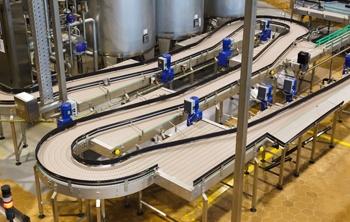
For reasons economic, social and environmental, a drive to boost efficiency and drastically cut down on waste of all types – materials, water and energy – is afoot across the U.S. Accurate, comprehensive and timely measurement and assessment of waste streams are prerequisites in order for any such plans to be realized successfully. Organizations such as UL Environment are stepping into the breach, establishing the tools, methods and standards necessary to measure, assess and drastically reduce waste streams across an expanding range of products and processes, as well as throughout organizations.
When it comes to reducing and managing solid waste streams, the UL ECVP 2799 “Zero-Waste-to-Landfill” validation refines the somewhat nebulous and variously defined concept of “zero waste.” With UL 2799, UL Environment sets out a comprehensive, rigorously-defined and independently-verified set of metrics and processes that a variety of leading companies are using to dramatically cut down the volume of solid waste being sent to landfills. In some cases, landfill waste has effectively been reduced to zero.
Zero-Waste-to-Landfill: A working definition
UL Environment's zero-waste-to-landfill initiative began taking shape in 2012, when it started working with roofing and building materials manufacturer GAF.
Working with GAF, as well as other businesses and municipalities aiming to reduce waste and enhance the overall sustainability of their operations, such as Bridgestone Americas, Mayer Brothers Apple Products and Waste Management's Phoenix Open PGA Tournament, UL 2799 has evolved into a comprehensive, clearly and rigorously defined environmental claims-verification standard and certification.
UL 2799 is comprised of three performance tiers:
- Zero Waste to Landfill: Products, facilities and/or organizations that have achieved a landfill waste diversion rate of 100 percent;
- Virtually Zero Waste to Landfill: Those that have achieved a landfill diversion rate of 98 percent or greater; and
- Landfill Waste Diversion: For those that have achieved landfill waste diversion rates of 80 percent or greater.
As UL Environment explains, “Each claim validation is clearly defined, carefully reviewed and thoroughly vetted so that businesses and their customers can understand the environmental significance of such a major achievement.”
Waste-to-landfill: Getting to zero
Whether it's a large multinational manufacturer or a smaller local businesses or municipality, any organization looking to earn the UL Environment 2799 claims validation should take several preparatory steps, Donald Mayer, global business development manager for UL Environment, told 3p in a recent interview. These include an organized, ideally centralized set of data management tools capable of measuring and tracking the material inputs and outputs of solid waste streams, controls that reach across the supply chain, and at least six months of associated data.
Though the process is “very scalable,” the amount of resources, time and effort a manufacturer needs to invest in order to earn a UL 2799 certification varies and depends on a variety of factors, Mayer continued. These include but aren't limited to: the exact nature and composition of manufacturing inputs; the types of products being manufactured; the size and number of facilities involved; the number and size of solid waste streams; and any associated claims verification for associated products. Similarly, costs depend on specific, individual circumstances and vary greatly due to the number of variables involved.
The business sustainability concept of “zero waste” had been defined and measured in different ways by different companies looking for ways to reduce their solid waste streams and convey the significance of these initiatives inside and outside the organization, Mayer explained.
There's a broad diversity of organizations looking to institute, and garner recognition for, their waste reduction efforts, Mayer noted. That presents opportunities for UL Environment's global audit teams, as well as business managers, employees, supply chain partners and distributors.
As Mayer explained, “We act as an auditor. It's important that we have key partners to help get them where they want to go.” UL Environment, for example, has worked closely with Waste Management to verify and certify waste diversion claims spanning a variety of manufacturers.
Surveying the zero-waste metrics, methods and standards being developed and put to use among businesses and municipalities, UL Environment found a variety in use, “some more narrow than we were looking for.” Its work with GAF, along with industry leaders and government experts, eventually led to development of the UL 2799 waste-diversion standard and environmental claims standard and certification, Mayer recounted.
Internal cheerleaders
Some see “zero-waste-to-landfill” as a compromise, arguing that organizations, and society, should be aiming for “zero waste," the complete elimination of waste in their operations. Mayer and UL Environment, in contrast, view “zero-waste-to-landfill” as a practical, and important, evolutionary step along that path.
UL Environment's 2799 landfill waste-diversion standard, for instance, permits organizations to employ waste incineration with energy capture, or anaerobic biodigesters, for as much as 10 percent of solid waste streams – as long as waste-to-energy capture technology is part of the process.
“The challenge we've seen in the marketplace is the assumption that achieving zero waste is very easy, but the reality is that it's not. Within the standard, we set a minimum level of waste diversion of 80 percent. It takes a significant investment and effort to get there.”
UL Environment permits waste-to-energy capture to “bridge the last mile of waste-diversion efforts,” Mayer continued. “You're always left with something. If you really, truly want to get to zero, energy capture fills that need.
“We're looking to reward manufacturers that are making every effort to divert waste from landfills. If they're putting waste to an alternative use, we wouldn't want to punish that.”
More than just earning an environmental certification, Mayer has seen the positive, transforming effects going through the waste-diversion claims validation process can have on organizations.
“The big thing we see – and this is universal – is the development of internal cheerleaders. Employees on the manufacturing floor and in offices that really 'own' the effort. There's an internal competition that you get at manufacturers where multiple locations are going through the process.”
As UL Environment spokesperson Dagmar Ebaugh pointed out:
“One of the benefits is not only getting validation, but also getting insight into manufacturing processes and the cost savings associated with having a cleaner, more streamlined process. That should be factored into the decision-making process.”
“UL Zero-Waste-to-Landfill Claim Validation is very thorough. I appreciated how they track and measure every part of the process,” Mayer Brothers Apple Products' Eric Place was quoted in a UL Environment case study. “We had to implement new systems, processes and additional record keeping to prepare for the first audit in June of 2013.”
Partnering with Waste Management Recycle America and several regional recyclers, Mayer Brothers is now able to manage every by-product stream in their manufacturing process. Mass balance spreadsheets track materials flowing through the facility to their destination as reused or recycled commodities.
Hence, perhaps the biggest achievement and benefit of obtaining a UL 2799 “Zero-Waste-to-Landfill” certification is the institution of a “zero waste” ethic – as well as the enabling tools, methods and systems – throughout manufacturing businesses, as well as across supply chain partners.
*Images credit: 1) Courtesy of UL Environment; 2) Mom Goes Green; 3) Sustainable Manufacturer Network; 4) U.S. EPA
Buddy Cianci Pasta Sauce: The Latest Cause Marketing Failure
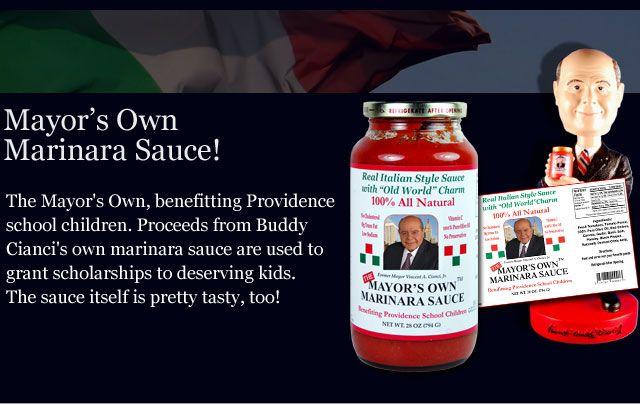

Rhode Island politics are certainly colorful. While some surveys suggest the state has cleaned up its act after enduring a reputation of corruption for decades, the state’s politicians certainly hold their own with their counterparts in Illinois, New Jersey and Florida.
Now the latest flack in the country’s smallest state is over two-time Providence Mayor Buddy Cianci’s pasta sauce. Cianci touts his pasta sauce, and charity’s work, as reason enough to run for mayor of Providence again this year — even though his two previous administrations ended with resignations after felony convictions. Never mind that he first quit after pleading guilty to assault and then again years later after he was charged for 27 crimes, including racketeering. So selling jars of pasta sauce, which purport to fund scholarships, would be a sweet way to atone for past sins, correct?
Well not quite: It turns out the Associated Press investigated the mayor’s claims, and found that from 2009 to 2012, the pasta sauce made a profit of $3.
Ever the politician, Cianci passes the blame around. His longtime advisor, Charles Mansolillo, pointed the finger at distributors, which he claims were either poorly managed or went bankrupt. The 20-year-old product also had its rough moments, including Cianci’s five-year prison sentence last decade, when the jars rarely made it to store shelves. Cianci and his aides also claim the company responsible for manufacturing the sauce cuts into the profits (curiously enough, the company manufacturing the pasta sauce doesn’t mention this product). And in the end, the former mayor explained the pasta sauce only complements other fundraising activities, such as a golf tournament, that pays for most of the 10 or so $1,000 scholarships given out to high school seniors annually.
Excuses aside, the labels say the jars of sauce are “Benefitting Providence School Children,” and are of course pitched in stores and online in kind. It’s a simple marketing lesson: A customer is going to buy a product because he or she thinks there is an altruistic benefit, not because it will “complement” and help brand a campaign. Additionally, Cianci’s defensive tone comes across as more political double-speak.
And therein you have another problematic cause marketing campaign. With countless products promising to solve everything from poverty to environmental problems, consumers need to know how sales of a product genuinely work — and where the funds exactly go. Such disclosure is one reason why Newman’s Own has succeeded for over 30 years: Of course, Paul Newman’s charity donates all after-tax profits to charity. And as Alley Watch writer Savannah Marie points out, authenticity also goes a long way: Campaigns that appear to be self-serving and focused on branding risk careening towards failure. Backtracking and excuses, which is what Cianci and his allies have been giving to anyone who listens, will guarantee even the most well-meaning campaign can flop. If you want to do good, be up-front and to the point -- and prepare to deliver or answer the tough questions when things do not go as planned.
Image credit: BuddyCianci.com
Leon Kaye has lived in Abu Dhabi for the past year and is on his way back to California. Follow him on Instagram and Twitter. Other thoughts of his are on his site, greengopost.com.